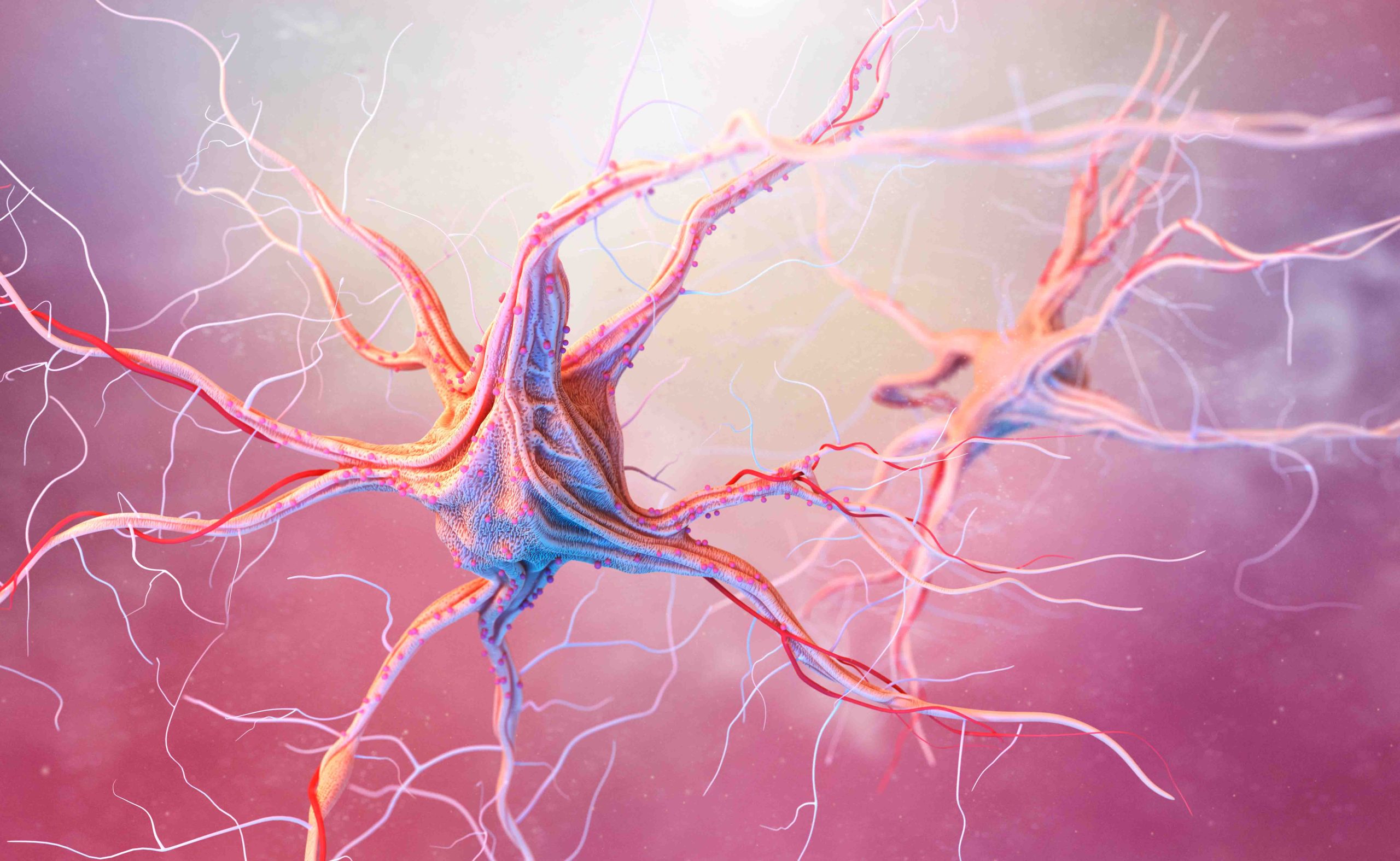Even though I am a psychiatrist, the lines and paragraphs that follow aren’t devoted to moral or soul pain, that pain no Band-Aids will ever cure, but “organic” or physical pain, where painkillers are so efficient (aren’t they?).
What exactly is pain?
Pain is a defensive mechanism. So boldly stated, it might be viewed even as an insult to all those doomed to live in pain on a daily basis, but a little reflection is enough to realize why evolution has promoted its existence. Pain is the very first “red flag”, a signal that something is wrong and compels us to acknowledge it: either stop moving a painful limb, which may be fractured, or seek immediate help with the unbearable pain of a heart attack. The rare people who cannot feel pain due to a genetic deficit are witness to those benefits, as well as the ailments, much more frequent, that patients with diabetes suffer in their feet because the damage of the nerves that transmit the pain makes them unable to feel it, so a simple graze due to tight shoes may become a terrible ulcer as these people lack this warning system whose function is to alert us of potential dangers.
The International Association for the Study of Pain defines acute pain as an unpleasant sensory and emotional experience associated with, or resembling that associated with actual or potential tissue damage. This definition states something we all know, but it is so difficult to convey to other people, or even to acknowledge its severity. The best tool to quantify pain, the Visual Analogue Scale (VAS), asks us to score our pain from 0 to 10. This provides an easy way to assess the efficacy of a treatment for pain, calculating the percentage of decrease in VAS.

Which types of pain can we find?
The simplest classification is acute (defined above) and chronic:
- Chronic pain, as opposed to acute pain, is a persistent pain state not associated with the triggering event and exists beyond the normal healing; it lacks a protective role.
- Acute pain is usually a symptom of the underlying health problem, whereas chronic pain is a disease condition in itself, with symptoms of refractory pain, functional and psychological impairment, and disability.
Another important distinction is between nociceptive pain, due to the activation of pain receptors or nociceptors, and neuropathic, secondary to the disturbance of the very same nervous structures committed to the transmission and perception of pain. Nociceptive pain is what we feel with a hit, puncture, heat, inflammation, etc., while neuropathic pain is felt more as an intense “bolt”, an extremely unpleasant sensation difficult to describe: the best-known example is the shock we feel along the forearm when we hit the internal aspect or our elbow. It is also usually accompanied by changes such as dysesthesias (distorted sensations: burning, tingling), hyperesthesia (oversensitiveness) and allodynia (pain perceived with painless stimuli).
How is pain transmitted?
We have a good knowledge of pain transmission paths and the substances involved. Concisely and simply put, the sensation starts at the nociceptors, specialized nervous structures, and from these to sensitive nerves, spinal cord, thalamus and eventually several brain areas, ultimately responsible for the perception of pain.

This deep knowledge of structures and substances permits on the hand to understand how pain is the result of damage to the various levels (spinal cord injury, stroke) and, on the other, develop strategies to fight pain in every front (blocks of peripheral nerves, spinal stimulators).
How is acute pain managed?
It was several decades ago (1986) that the World Health Organization (WHO) released its “pain relief ladder”, initially proposed for cancer pain and adopted subsequently in other conditions. The pain is graded in mild, moderate and severe (according to the VAS score) and suggests various medications in each of the steps, from acetaminophen and nonsteroidal anti-inflammatory drugs (NSAID: ibuprofen, aspirin…) to the strongest opioids (morphine, fentanyl) in the last one.
Generally and even though there are obvious exceptions, the management of acute pain with medications (through several routes: oral, intravenous, regional, epidural…) obtains an effective relief. It is important to adjust carefully the doses and duration of the treatment to avoid complications and specially, addictions to opioids.
What is the way to chronic pain?
With repeated and ongoing exposure to painful stimuli, our central and peripheral nervous systems undergo a process known as sensitization, dependent upon neuronal plasticity: the final result is persistent pathological pain: enhanced and prolonged pain perception after minor nociceptive stimuli, or even in absence of these. Once peripheral and central sensitization are involved, the pain is usually more difficult to treat or even refractory to standard therapies.

It is now believed that this sensitization process is involved in a wide variety of chronic pain conditions, such as tension headache or carpal tunnel syndrome, also in those previously thought to be mainly nociceptive in nature (osteoarthritis, fibromyalgia).
What are the most common causes of chronic pain?
The most common causes span from primary pain disorders (fibromyalgia, chronic headache) to rheumatological (arthritis), endocrine (diabetes) and orthopedic (disk hernia) conditions: all of them are prevalent disorders in general population. Even though the various reports yield widely variable figures, the lowest estimate of prevalence for chronic pain in general population is around 25%.
How is chronic pain managed?
In chronic pain, which constitutes a disease entity by itself as we stated above, medications are just a small part of the management. The best outcomes come from a multimodal approach, consisting on the simultaneous, instead of sequential use of multiple treatment modalities for pain: medicines (not only painkillers, certain antidepressants and antiepileptics are first line treatments in several pain conditions), rehabilitation (physical therapy, occupational therapy), psychology (see below), interventional pain management (peripheral nerves block, epidural injections), implantable devices (spinal cord stimulators, intrathecal pumps), complementary and alternative medicine (acupuncture), nutritional counselling (losing weight), vocational counselling (return to work).

It is essential to identify and treat all the comorbid conditions if we aim to have good outcomes in chronic pain, including psychological/psychiatric disorders or even the lack of social support.
What is the role of psychology/psychiatry in chronic pain?
Many of the people who suffer chronic pain also have psychological/psychiatric disorders, mainly anxiety and depression; it is not pure chance that every Pain Unit is staffed with a psychologist/psychiatrist.
Just like those philosophical questions so difficult to answer, it remains a challenge to differentiate between cause and effect, whether anxiety and depression came before the pain or this is the root cause of the psychological issues. Anyway, it seems reasonable to assess and treat the actual condition, and worry later, almost at a mere academic level, about establishing which one arrived first.

Antidepressant drugs treat anxiety and depression, and one of their categories, the so-called “dual antidepressants”, which enhance both serotonin and noradrenaline, is the first-line choice for neuropathic pain.
There are multiples modalities of psychotherapy well described in pain: hypnosis and visualization, guided imagery, biofeedback, cognitive-behavioral therapy, group psychotherapy and family therapy. They use different techniques, but all of them have in common assisting the patient to cope with the condition and avoiding pain from becoming the absolute focus of their lives.
A message of hope: the advances in the understanding of paths and substances involved in pain, recent developments in its management, from new pharmacological strategies to outstanding interventionist procedures, together with the realization that psychological/psychiatric therapy constitutes an essential component of a comprehensive management of pain, have permitted and will further permit that many people won’t be doomed to live in pain anymore.
About the author
Alicia Fraile is a psychiatrist at SINEWS with more than 20 years of experience in general clinical psychiatry. She has worked in brain damage, Mental Health Centers, occupational psychiatry, work accidents and their repercussion in psychiatry (post-traumatic stress disorder, adaptive disorders), patients with chronic health problems and of course with the most frequent pictures of our field: anxiety, depression, insomnia, obsessive-compulsive disorder.

